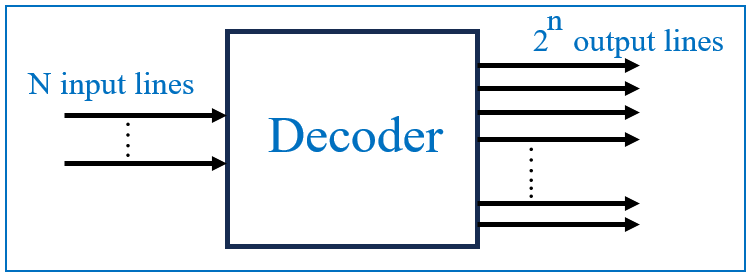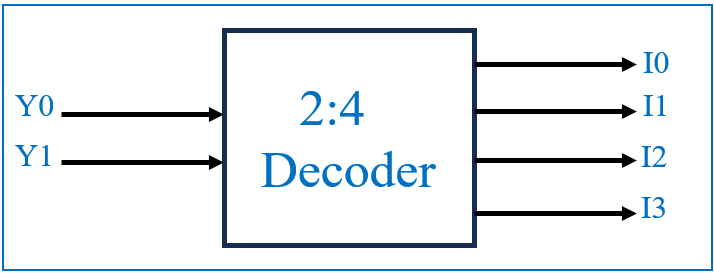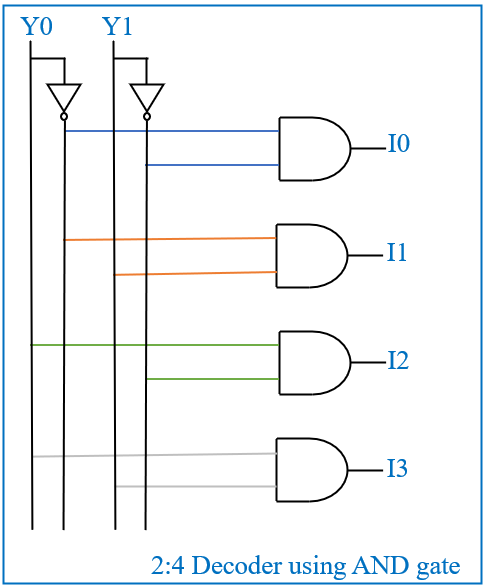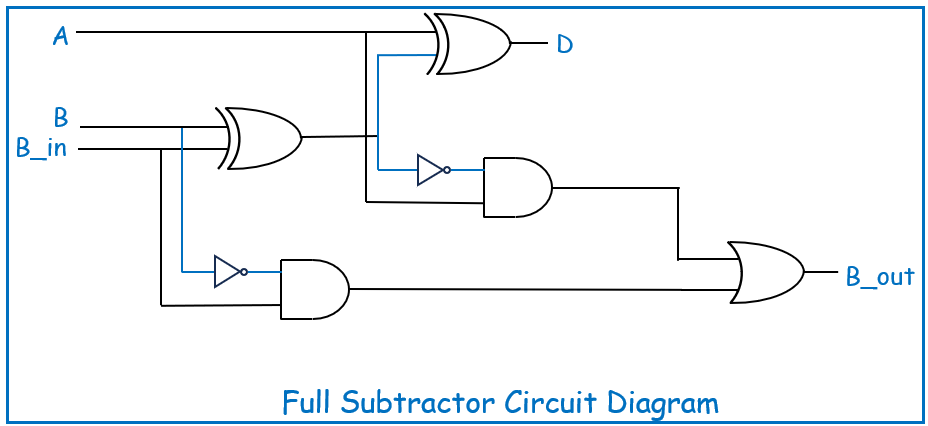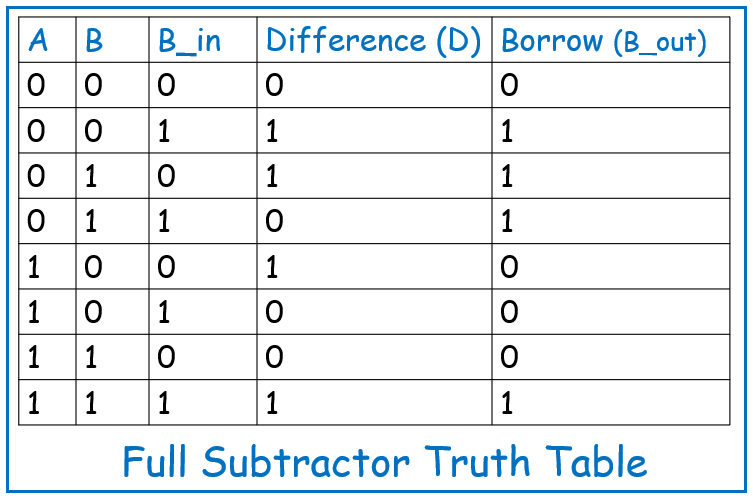An amplifier is an electronic device or circuit that increases the power, voltage, or current of an input signal. Amplifiers are a crucial part of many electronic systems, enabling small input signals to be boosted for a variety of applications such as audio devices, communication systems, and instrumentation.
At its core, an amplifier takes a weak input signal and, through its design, produces a stronger output signal while maintaining the characteristics of the input, such as waveform and frequency. This increase in signal strength can be described by the term “gain,” which represents how much an amplifier increases the amplitude of the signal.
The gain of a single amplifier is often insufficient for practical use. To achieve the desired high gain, multiple amplifier stages are coupled together.
An operational amplifier (OPAMP) is a high-gain, direct current (DC) amplifier with differential inputs. It amplifies the difference between two identical but opposite input signals while rejecting common-mode signals (signals that are the same at both inputs). This makes OPAMPs very versatile, as they can amplify both DC and alternating current (AC) signals.
Additionally, OPAMPs can perform various mathematical operations, such as addition, subtraction, differentiation, integration, and even act as buffers or analog-to-digital (A/D) converters. OPAMPs typically require a dual power supply for proper functioning.
Characteristics of an ideal OPAMP:
- Infinite open-loop gain
- Infinite input impedance
- Zero output impedance
- Infinite common-mode rejection ratio (CMRR)
- Zero response time (instantaneous response)
- Zero input bias current
- Zero input offset current
- Zero input offset voltage
Basic Circuit Diagram of an OPAMP
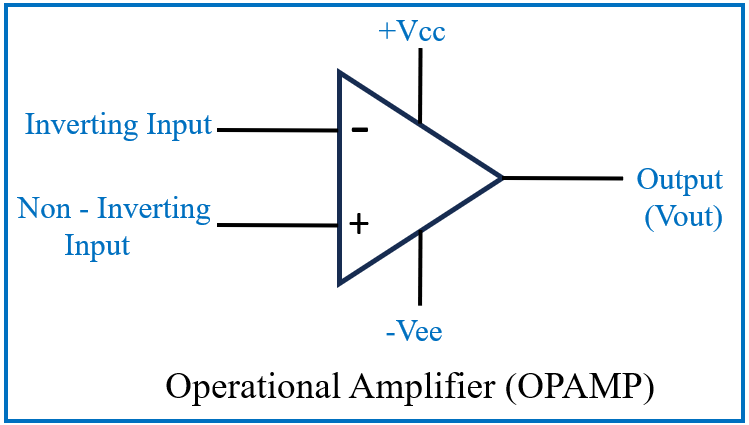
The diagram above shows the basic circuit of an operational amplifier (OPAMP). It has two input terminals — an inverting input (labeled “-”) and a non-inverting input (labeled “+”) — and one output terminal. The inputs are differential, meaning the OPAMP amplifies the voltage difference between the two input terminals. The inverting input reverses the phase of the input signal by 180 degrees, while the non-inverting input maintains the signal’s original phase.
- Inverting Input (-): The signal applied to this input will be inverted at the output.
- Non-inverting Input (+): The signal applied to this input will appear at the output without inversion.
In addition to the inputs and the output, the OPAMP requires a power supply to operate. This is provided by the +Vcc and -Vee terminals:
- +Vcc: The positive supply terminal, which provides the upper voltage limit for the output signal. The output cannot exceed this voltage.
- -Vee: The negative supply terminal, which sets the lower voltage limit for the output signal. The output cannot drop below this voltage.
For example, if the OPAMP is powered by +15V and -15V, the output can swing between these limits. This is essential for amplifying both positive and negative signals, making the OPAMP suitable for alternating current (AC) signals as well as direct current (DC) signals.
Block Diagram of an Operational Amplifier (OPAMP)
The operational amplifier (OPAMP) consists of several internal blocks that work together to amplify the input signal. Below is the step-by-step flow and function of each block in your block diagram:

1. Differential Amplifier (First Stage):
The two input signals, inverting and non-inverting, are fed into the first differential amplifier. This stage amplifies the difference between the two inputs and rejects any signals common to both inputs (common-mode signals).
The constant current source connected to this stage provides stable biasing for the transistors in the differential pair. It ensures that the current remains constant regardless of variations in supply voltage or temperature, improving the amplifier’s linearity and performance.
This stage sets the foundation for the OPAMP’s high input impedance and good common-mode rejection ratio (CMRR).
2. Second Differential Amplifier (Intermediate Stage):
The output from the first differential amplifier is fed into a second differential amplifier, which further amplifies the differential signal while continuing to reject any residual common-mode noise.
This stage improves the gain of the OPAMP and ensures that the signal is prepared for the next stages of amplification and processing.
3. Emitter Follower (Buffer Stage):
After the second differential amplifier, the signal is passed to an emitter follower (or buffer) stage. This stage has a high input impedance and low output impedance, making it ideal for impedance matching.
The emitter follower ensures that the signal can be transferred efficiently to the next stages without loading the previous stage, maintaining signal integrity.
4. DC Level Shifter:
The DC level shifter is used to adjust the DC bias of the signal. Since the differential amplifier stages might introduce a DC offset, the level shifter corrects this by shifting the signal back to the desired reference level.
This block ensures that the output stage operates correctly, especially in circuits where precise voltage levels are critical.
5. Output Stage:
The output stage is typically a high-power amplifier stage that provides the necessary current to drive the load connected to the OPAMP’s output.
This stage is designed to handle large signal swings and provide enough current to low-impedance loads, ensuring that the OPAMP can drive a variety of external circuits.
6. Output Load:
The final block is the output load, which represents the external circuit or device that the OPAMP is driving. This could be anything from another amplifier stage to a speaker or other analog component.
Each stage in the OPAMP works together to provide high gain, low output impedance, and excellent signal fidelity, ensuring the amplified signal is clean and stable across a wide range of applications.
Conclusion and What’s Next
In this blog, we’ve explored the fundamental aspects of operational amplifiers (OPAMPs), from their basic functionality and characteristics to the internal block diagram and circuit structure. Understanding these components is crucial for grasping the power and versatility of OPAMPs in electronic systems.
In the next blog, we’ll dive deeper into specific OPAMP configurations such as inverting and non-inverting amplifiers, where we’ll explain how these modes work. Additionally, we’ll explore important OPAMP parameters such as:
- Common-Mode Rejection Ratio (CMRR): The ability of an OPAMP to reject input signals common to both input terminals.
- Power Supply Rejection Ratio (PSRR): The OPAMP’s ability to maintain performance despite variations in the power supply.
- Slew Rate: The rate at which an OPAMP’s output can change in response to a rapid input signal.
We’ll also look at how OPAMPs perform different operations, such as:
- Addition and Subtraction
- Differentiation and Integration
- Buffering
- Analog-to-Digital Conversion (A/D)
Stay tuned to understand how these operations and configurations make OPAMPs an indispensable tool in modern electronics!
